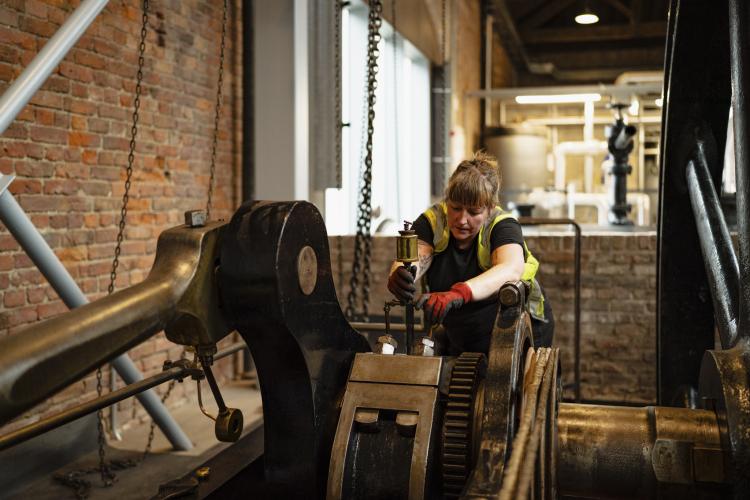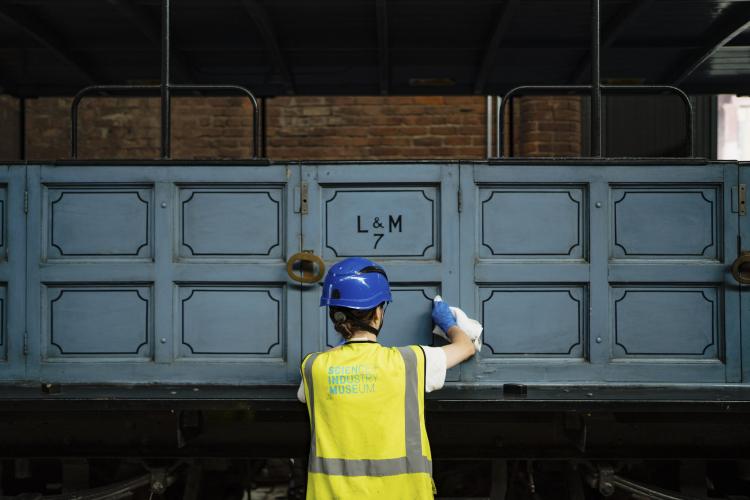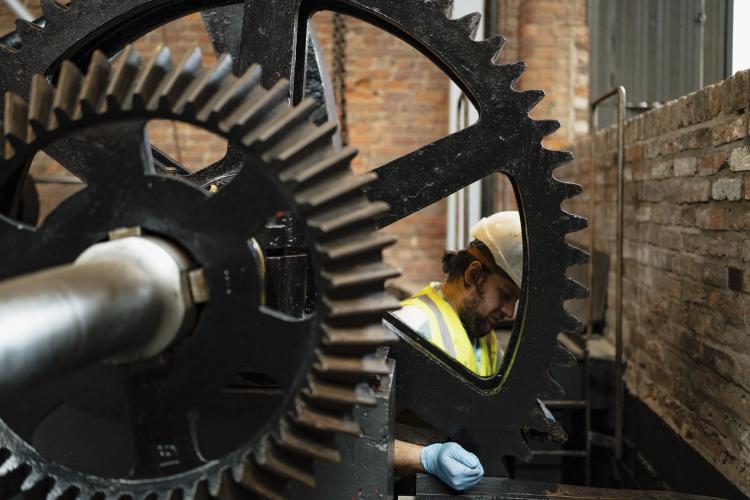Salix helps power up Manchester’s historic engines with sustainable upgrade
Salix is proud to celebrate the reopening of Power Hall: The Andrew Law Gallery at Manchester’s Science and Industry Museum - a landmark moment in heritage restoration and sustainable innovation
The Science and Industry Museum in Manchester is set to welcome visitors back inside after undergoing major modernisation at one of the UK’s most precious industrial heritage buildings.
Power Hall: The Andrew Law Gallery is a free working gallery that will reopen on Friday 17 October, giving people a chance to learn about engine-driven ideas and industry that started in Manchester and went on to change the world.
At Salix we’re delighted to have supported the project thanks to funding from the Public Sector Decarbonisation Scheme. The museum was awarded £4.3 million of funding from the Public Sector Decarbonisation Scheme, delivered by our teams at Salix and run by the Department for Energy Security and Net Zero.
The famous museum has also been able to tap into other funding, enabling the building to showcase historic industrial engines powered by 21st-century, zero-carbon technology.
Bringing history to life sustainably
Power Hall, first opened in 1983, houses one of the UK’s largest collections of working engines, from the steam engines that powered railways and cotton mills to those that generated electricity for early industries.
Closed since 2019 for urgent repairs, the hall has now reopened following a major decarbonisation project and a full refresh of its displays and visitor experience.
Visitors can once again see these incredible machines in action, but this time they run on renewable energy systems - including water from an underground aquifer for heating and an electric boiler to produce steam - reducing carbon emissions across the site by 515 tonnes per year.

A museum technician working on the Durn Mill steam engine in Power Hall
Photo credit: Science and Industry Museum
Salix: enabling decarbonisation in historic buildings
Salix is delighted to have supported the Science and Industry Museum in delivering this ambitious upgrade. By funding cutting-edge sustainability improvements through the Public Sector Decarbonisation Scheme, Salix helps ensure that historic public buildings can meet modern energy and carbon reduction standards, while remaining accessible and inspiring for the public.
This project demonstrates how heritage and innovation can go hand in hand: visitors experience a tangible connection to Manchester’s industrial past while seeing pioneering green technology in action - a perfect example of the kind of low-carbon solutions Salix enables in the public sector.

Museum conservator cleaning the second-class carriage in Power Hall
Photo credit: Science and Industry Museum
Inspiring future generations
Live demonstrations in the Power Hall now highlight the skills of the museum’s technicians, volunteers, and T-level apprentices, showing how historic engineering techniques can combine with modern sustainability practices.
Sally MacDonald, Director of the Science and Industry Museum, said: “Power Hall symbolises Manchester’s innovation, creativity and resilience. This reopening shows how historic buildings can be preserved while embracing the technologies needed for a sustainable future. We hope it inspires the next generation of engineers and inventors.”
Power Hall: The Andrew Law Gallery reopens on Friday 17 October. Entry is free.

The Vulcan steam locomotive being cleaned in Power Hall
Photo credit: Science and Industry Museum
By supporting projects like this, at Salix we continue to help public sector organisations reduce carbon emissions, save energy, and showcase sustainability in action, making green transformation a reality for historic and modern buildings alike.
For more information about the gallery, visit: Science and Industry Museum – Power Hall.
The Science and Industry Museum is part of the Science Museum Group, a family of museums which also includes the Science Museum in London; the National Railway Museum in York and Shildon; and the Science and Media Museum in Bradford. The Science Museum Group is devoted to the history and contemporary practice of science, medicine, technology, industry and media. It welcomes five million visitors each year.

Museum volunteer cleaning the Durn Mill steam engine in Power Hall
Photo credit: Science and Industry Museum




